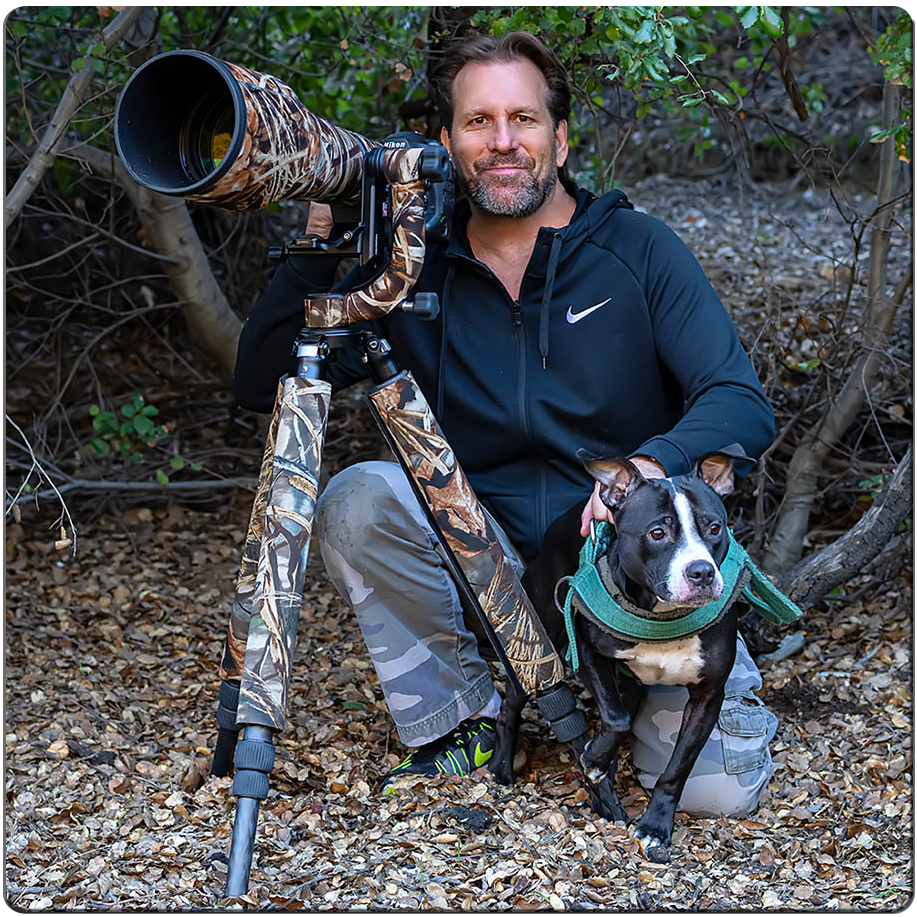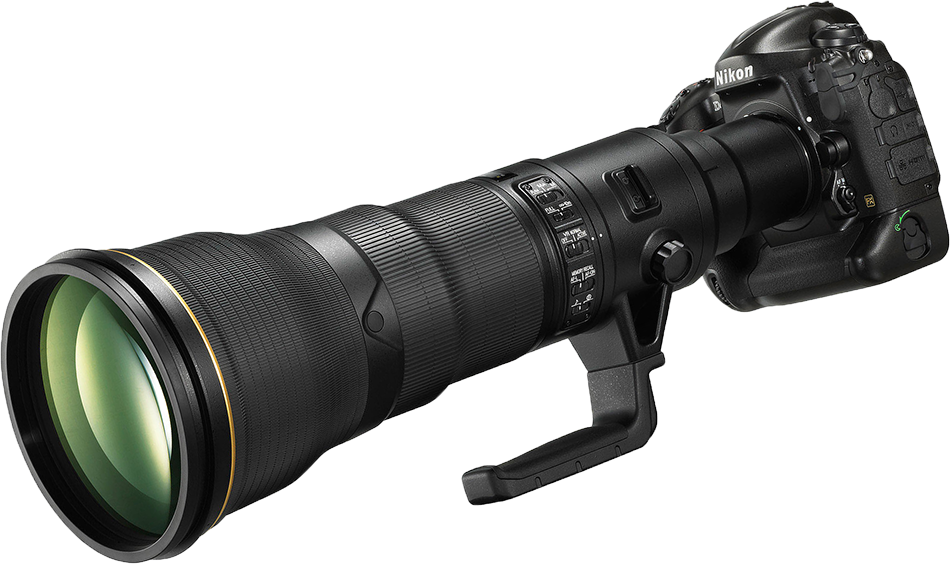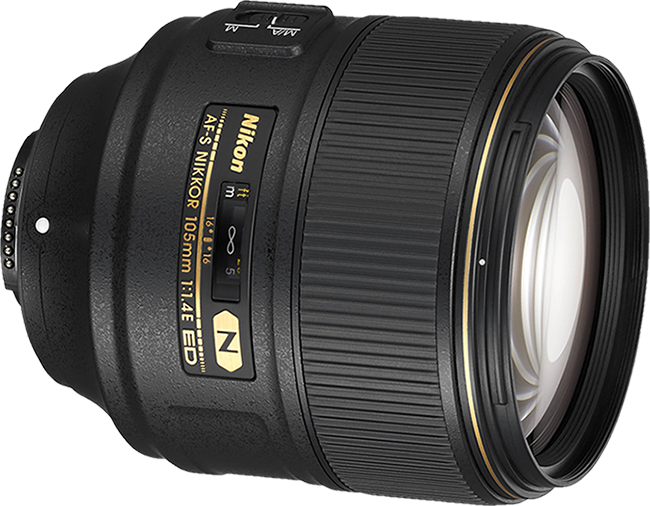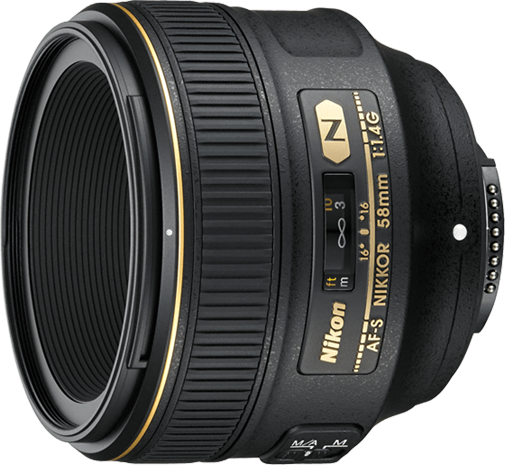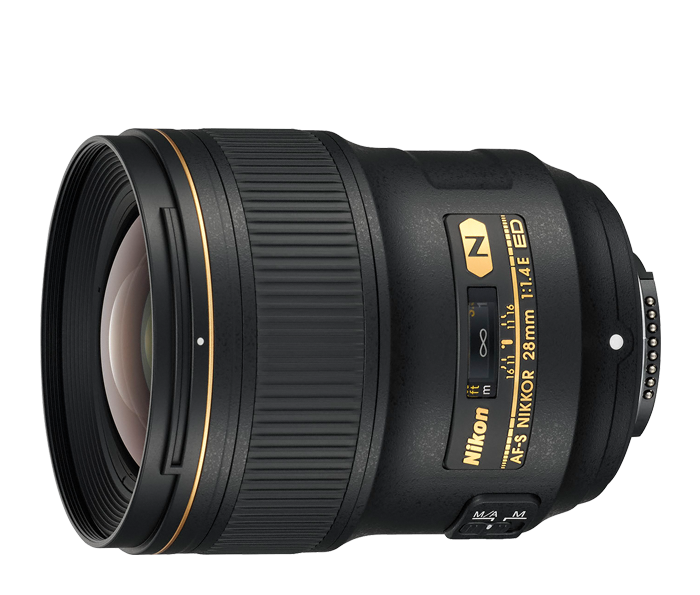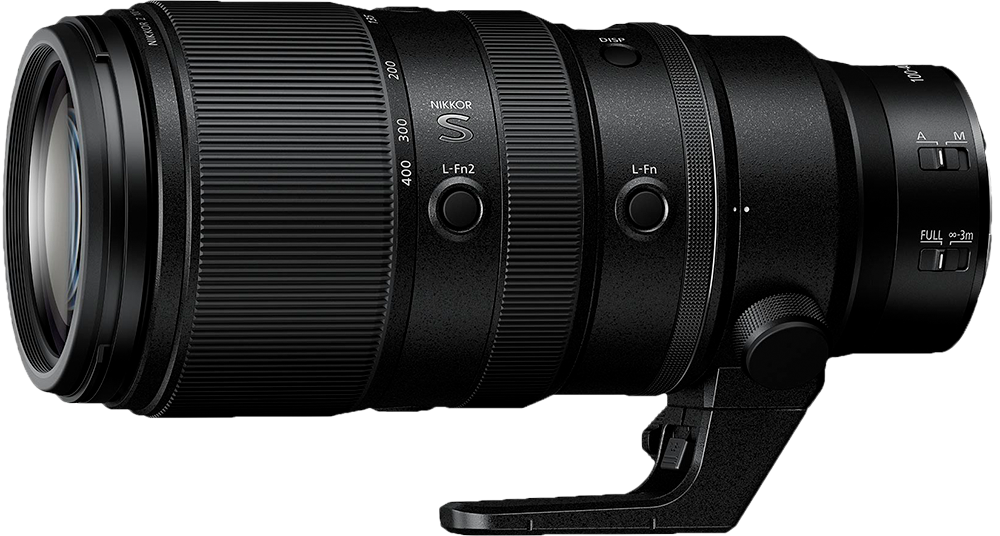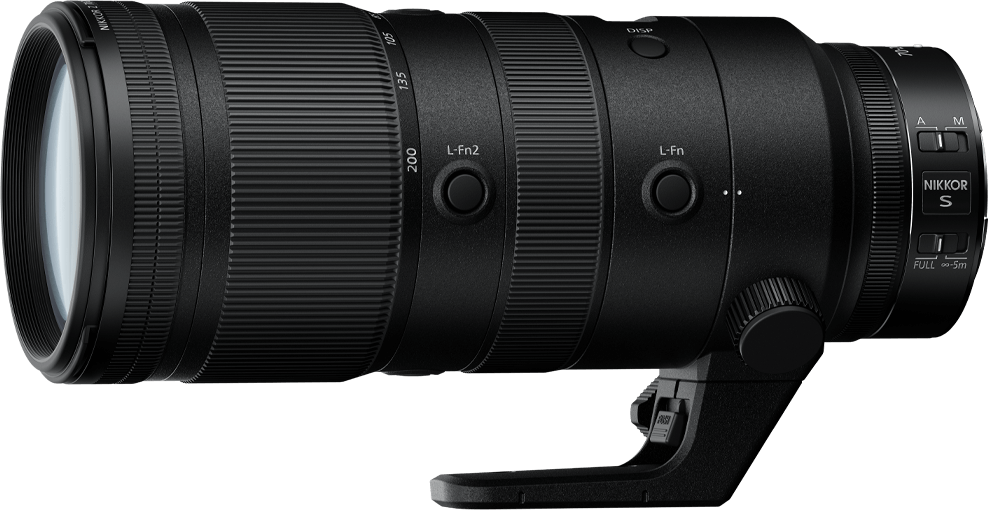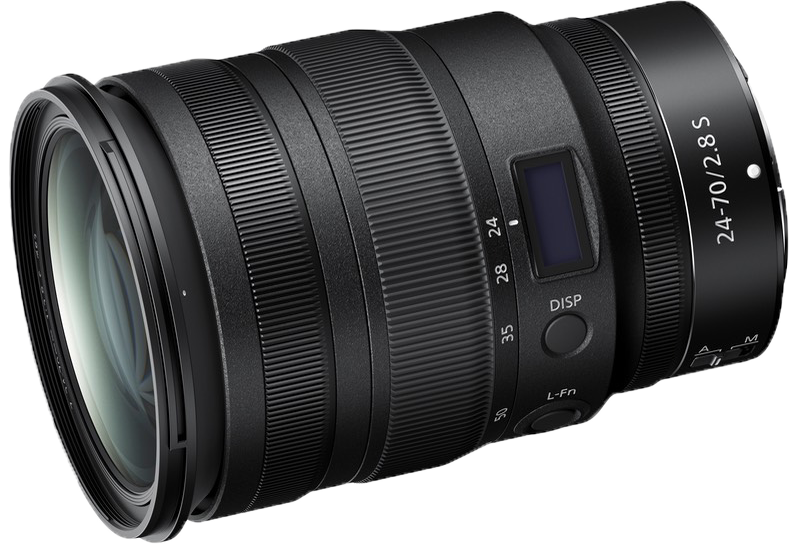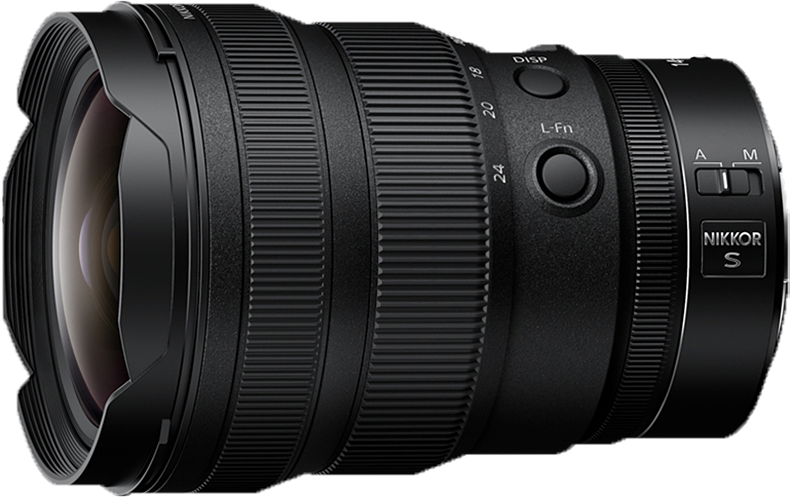Auto-Focus Lenses
Whether F-Mount or Z-Mount, Nikkor AF lenses represent “The Standard” for wildlife and other challenging photography. My lens collection now covers every focal length, from 8mm to 800mm (and, with a 2x TC, I can get up to 1600mm). The only lens I lack now is a 200mm macro lens, in Z-Mount, and that is because it hasn’t been invented yet 🙂
While I actually prefer to use manual-focus lenses for many aspects of nature photography (landscapes, flowers, most macro situations, etc.), when it comes to capturing active wildlife, especially at a distance, precision AF becomes vital when there is minimal time to react. When selecting focal lengths in prime lenses, I typically choose successive focal lengths roughly-double the focal length of the lens before it (e.g., 100mm, 200mm, 400mm, 800mm, etc.). With zooms, I choose successive spans of coverage (e.g., 8-15mm, 14-24mm, 24-70mm, etc.) That said, these represent my current Nikkor AF lens line-up, in both F- and Z-Mounts:
F-Mount Glass
Established in 1959, the Nikon F-Mount has been the most flexible mount available, for other brands to adapt, until the advent of mirrorless. Many of the most incredible, specialty lenses ever made have been crafted exclusively in this mount. As a passionate photographer, I have accumulated some of the finest F-Mount lenses made—and, thanks to the FTZ Adapter, these lenses still operate perfectly on my new Z-Mount cameras. The FTZ adapter has ensured me a smooth transition, allowing me to continue to enjoy the following stellar F-Mount optics for the rest of my life:
Nikkor AF-S 800mm f/5.6E FL ED VR
The Nikkor 800mm FL ED is the ultimate birding lens, offering unsurpassed reach along with unmatched resolution and rendering. Simply put, there is no other wildlife lens (with or without TCs) that can match the optical quality of the bare 800 FL ED. This benchmark lens is the perfect companion for the Nikon D5, because the extreme focal length allows me to “fill the frame” with my subjects, while enjoying the reflexes and class-leading ISO performance of Nikon’s premier action camera. Further, when I need to go beyond 800mm, I can achieve up to 1600mm using my FTZ adapter on my Z6, which retains AF on all 4 Nikkor TCs (1.25x, 1.4x, 1.7x and 2x), allowing me to fill the frame from the greatest distance currently possible.
For deployment on-the-move, I have found I can actually hike with (and hand-hold) this lens by using two slings to carry it, the Magpul MS4 Dual QD Sling and the BlackRapid Sport Strap. What allows me to deploy two slings at once, on the same lens, is the RRS LCF-17 Lens Foot (which has two ports to accommodate both slings, simultaneously). By taking the weight burden from my hands, and comfortably-distributing it across my shoulders, these twin straps allow for “hands-free” hiking … as well as instant deployment … in a way that lugging a tripod around cannot.
See @ Nikon: Nikkor AF-S 800mm f/5.6E FL ED VR
Nikkor AF-S 400mm f/2.8E FL ED VR
The Nikkor 400mm FL ED is the sharpest Nikon super-telephoto lens made. It’s value lies in its f/2.8 aperture and how sharp it is wide-open. By being Nikon’s sharpest lens, it’s wide-open aperture creates a compression, separation, and “look” that few other lens can match. Even better, with a native .16x magnification, if I add a 36mm extension tube, I can enjoy a ~1:4 reproduction ratio, from 8′ away, and photograph most butterflies with a level of rendering and compression that is not possible with a standard macro.
As with the 800 FL ED, the 400 is similarly hand-holdable, because I also carry it with a Magpul MS4 Dual QD Sling and a BlackRapid Sport Strap. Again, these simple, but effective straps take the weight-burden away and yet allow for instant deployment. Another important point is the flexibility of this lens, as for instance when traveling. I can’t bring two large lenses, and the 400 FL ED + 1.4x and 2x TCs represent a more flexible premier-quality option over my 800mm. For this reason, the 400 FL ED is the MVP of my travel lens lineup.
See @ Nikon: Nikkor AF-S 400mm f/2.8E FL ED VR
Nikkor AF-S 105mm f/1.4E ED
This lens is amazingly-sharp wide-open and, even better, its AF allows me to nail the focus quickly (which might be missed with MF), and with precision. The combination creates a unique portraiture perspective, especially in nighttime conditions when hand-held. With pleasing bokeh and rendering transitions, the Nikkor 105 f/1.4E allows me to capture intimate moments, from afar, with exquisite sharpness, separation, along with artistic rendering. Also, with a 36mm extension tube, I can enjoy a 1:2.3 reproduction ratio (.43x) for the kind of flower photography sharpness, rendering, and bokeh that is not possible with a standard macro lens.
See @ Nikon: Nikkor AF-S 105mm f/1.4E ED
Nikkor AF-S 58mm f/1.4G
This is a Nikon signature portraiture lens, and one the coolest I’ve ever used, and yet (ironically) it doesn’t do well on the lab benches. It is not particularly sharp, but its rendering is “artsy,” with a unique “embossed” and “dreamy” effect. For those who try it, they will find the 58mm f/1.4G to be a terrific niche lens designed for a specific type of photography. Photography Life has a great review. Although human portraiture is not my usual effort, this lens also offers unique perspective to nature and wildlife photography. To fully-appreciate this lens, one has to either see the images from it (or use it themselves). It produces effects not easily duplicated in any other mount or system.
See @ Nikon: Nikkor AF-S 58mm f/1.4G
Nikkor AF-S 28mm f1.4E ED
With near Otus-like performance, and yet having the benefit of AF, this 28mm f/1.4 lens is a special treat to use in the field. It also offers great portrait (and other special) effects for indoor shooting at night, as for instance events, etc. With the advent of “eye AF” on the Z-mount cameras, its speed and sharpness are even more elevated than when used on the original DSLR cameras for which it was originally intended. So far, no Z-Mount lens can touch it, either, which is why I kept this (and these select few other) F-Mount lenses.
See @ Nikon: NIKKOR AF-S 28mm f/1.4E ED
Nikkor AF-S Fisheye 8-15mm f/3.5-4.5E ED
Just picked-up this cool little lens, which completes my collection of zooms (see below). This interesting little fellow is the first of its kind for Nikon (and me!). With the ability to get within 6″ of the subject, and with a 0.34x reproduction ratios, the added curvature of the “fisheye” effect ought to produce some pretty interesting images for me, as I explore the possibilities with it. Will update later.
See @ Nikon: Nikkor AF-S Fisheye 8-15mm f/3.5-4.5E ED
Z-Mount Glass
The Z-Mount possesses critical specifications which position Nikon users to enjoy some unique advantages over other brands with lesser mounts. The Z-Mount’s 16mm flange distance, mated with its 55mm throat width, mean Nikon’s Z-Mount lenses will lenses will have engineering advantages in image quality over all other other systems. The Z-Mount ‘S’ lenses now offer a level of edge-to-edge clarity, along with APO color-correction, which actually are not possible in other systems. However, the Z-Mount’s flange advantages apply mostly at the wide-end (from 10mm to 100mm). For longer glass, from telephoto to super-telephoto, there is no real reason to switch mounts.
Nikkor Z Zoom lenses
As a lens fancier, I’ve never been a fan of zoom lenses. Reason being, while handy, zoom lenses typically offer inferior image quality to prime glass. Or, at least they used to. Nikon’s most recent, pro-level, Z-mount “S” zoom lenses are now actually eclipsing what many of Nikon’s elite elder F-Mount primes could do—all across their zoom ranges. This incredible new Z-Mount has enabled me to essentially get rid of 1-2 primes, for every “one” Nikkor Z zoom I purchase—lightening my load—and putting money back in my pocket in the process.
Nikkor Z 100-400mm f/4.5-5.6 VR S
This is my “+1” … it doesn’t really fit quite perfectly into my hierarchical line-up, but it does stand alone as a great go-to tool for the field, offering exceptional versatility. I bought it essentially to “fill the gap” between 200 and 400mm (because I use the 70-200 f/2.8 up to 200mm, due to the faster aperture). The main advantage of this field lens is its native .38x reproduction ratio, because when I ad a 1.4x TC—I can hit the field with a 140mm to 560mm optic,, with the reproduction ratio increasing to .52x. Even better, it is much lighter than my true F-Mount super-telephotos. This lens is my first choice while looking for butterflies, lizards, and just general all-around hiking & shooting. It may not be a truly sensational optic, but it is really handy for just about everything, and it renders pretty darned good, if not exceptional.
See @ Nikon: Nikkor Z 100-400mm f/4.5-5.6 VR S
Nikkor Z 70-200mm f/2.8 VR S
According to both Ephotozine, as well as Photography Life, this is the best 70-200 f/2.8 lens that has ever been designed, offering prime-level performance all across the focal lengths (70mm, 85mm, 135mm, 200mm), while giving me countless framing options inbetween. While it has been replaced by my 100-400 for butterfly, dragonfly, and most general reptile photography, the 70-200 does offer even better image quality, with almost zero CA, as well as absolutely exquisite bokeh. It has “its own look,” of premier character, so I select this zoom when I think it will give me an advantage. Since the 100-400 is so much more versatile, I use this lens a bit less now, and only when I want the best. I only shoot it bare (no TCs), exactly within its focal range, when I know its sublime rendering will will make the difference.
See @ Nikon: Nikkor Z 70-200mm f/2.8 VR S
Nikkor Z 24-70 f/2.8 S
According to every testing body, this is the best 24-70 f/2.8 lens ever designed, offering prime-level performance over the three most important standard prime focal lengths (24mm 35mm, 50mm), and giving me everything inbetween and a little bit beyond. This makes the Z 24-70 f/2.8 S the perfect walk-around and travel lens, where it simply delivers. The 24-70 f/2.8 S is actually the primary lens I use now for my professional career as a casualty investigator on my Z6. (It is also the lens I use on my Z6 for videos and podcasts.) Its excellent image quality, comfortable ergonomics, and durable build make this lens my professional workhorse for standard ranges..
See @ Nikon: Nikkor Z 24-70mm f/2.8 S
Nikkor Z 14-24 f/2.8 S
Since Nikon themselves have been saying the wide-end of their optic range is where the true benefits of the Z-Mount will be realized to their uttermost, this zoom lens has thus been Nikon’s most anticipated release for me. Basically, it has allowed me to part with 3 excellent Zeiss Distagon primes (15mm, 21mm, 25mm), putting money back in my pocket after selling them them, while this new Nikkor Z ‘S’ professional zoom offers better image quality than all of them, again lightening my load in one slick replacement. Just read the Photography Life Review. Nikon simply delivered. This is the shortest, lightest, and highest-quality 14-24mm f/2.8 constant-aperture zoom on earth.
See @ Nikon: Nikkor Z 14-24 f/2.8 S
